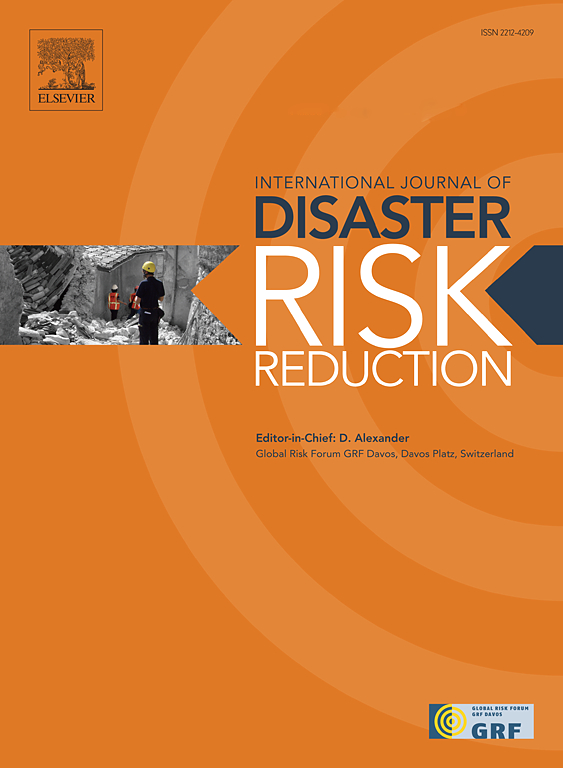Analysis of the social impact of meteorological drought on Peninsular Malaysia based on the integration of precipitation satellites and sentiment analysis
IF 4.2
1区 地球科学
Q1 GEOSCIENCES, MULTIDISCIPLINARY
International journal of disaster risk reduction
Pub Date : 2025-02-15
DOI:10.1016/j.ijdrr.2025.105314
引用次数: 0
Abstract
The integration of satellite data observations with other data sources and analytical tools, such as news media and machine learning algorithms, will enhance the utilization of satellite information capabilities. This study validates 38 rain gauges with the 23 years merging satellite Tropical Rainfall Measuring Mission (TRMM) 3B43V7 (year 2000–2014) data and its successor Global Precipitation Measuring Mission (GPM) 3IMERG (year 2015–2022) Final (Version 6) data to monitor dry conditions in Peninsular Malaysia using the Standardized Precipitation Index (SPI). Seven English online news articles were used to collect 4086 label training headlines related to drought keywords. This study compares the performance of the text sentiment analysis model Naïve Bayes, Convolutional Neural Network (CNN), Bidirectional Encoder Representations from Transformers (BERT), and Long Short-Term Memory (LSTM). The evaluation of TRMM-3B43V7 and GPM-3IMERG showed a significantly high correlation (R2 = 0.873) and is a reliable source for providing a combined long-term precipitation record and drought study in Peninsular Malaysia. The results of sentiment analysis using the LSTM method showed a high accuracy of 0.804, whereas the training duration was significantly lower than that of the other models. Finally, the trained LSTM model was used to predict the sentiment on a separate headline input dataset and to compare the expected sentiment result with drought-affected areas from the satellite SPI-12 timescale outputs. During drought or non-drought events, water remains a significant problem in most economic growth contributor states, such as Selangor and Penang. Therefore, sustainable water management must be implemented to improve socioeconomic development.
求助全文
约1分钟内获得全文
求助全文
来源期刊

International journal of disaster risk reduction
GEOSCIENCES, MULTIDISCIPLINARYMETEOROLOGY-METEOROLOGY & ATMOSPHERIC SCIENCES
CiteScore
8.70
自引率
18.00%
发文量
688
审稿时长
79 days
期刊介绍:
The International Journal of Disaster Risk Reduction (IJDRR) is the journal for researchers, policymakers and practitioners across diverse disciplines: earth sciences and their implications; environmental sciences; engineering; urban studies; geography; and the social sciences. IJDRR publishes fundamental and applied research, critical reviews, policy papers and case studies with a particular focus on multi-disciplinary research that aims to reduce the impact of natural, technological, social and intentional disasters. IJDRR stimulates exchange of ideas and knowledge transfer on disaster research, mitigation, adaptation, prevention and risk reduction at all geographical scales: local, national and international.
Key topics:-
-multifaceted disaster and cascading disasters
-the development of disaster risk reduction strategies and techniques
-discussion and development of effective warning and educational systems for risk management at all levels
-disasters associated with climate change
-vulnerability analysis and vulnerability trends
-emerging risks
-resilience against disasters.
The journal particularly encourages papers that approach risk from a multi-disciplinary perspective.
 求助内容:
求助内容: 应助结果提醒方式:
应助结果提醒方式:


